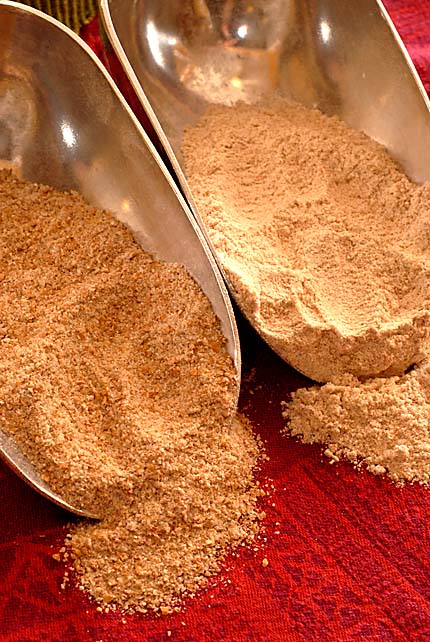How I measure flour using the “scoop-and-sweep” method
When people write to tell me that their dough seems “too wet,” the first question I ask is: how are you measuring? Because I measured with the “scoop-and-sweep” method, not the “spoon-and-sweep” method.–view the video to see exactly how I do it.
American recipes usually are based on volumes, measured with standardized measuring cups. If you press down into the flour bin (use a flour bin, not the flour’s bag), you’ll compress and get too much flour. If you use the “spoon-and-sweep” method, where a spoon is used to gently fill the measuring cup before sweeping, you’ll get too little flour into the cup. Likewise, don’t “aerate” the flour by mixing it or whisking before measuring; that will lighten the cup.
If you do it the way I tested it (and use flours like the standard ones I tested with), you’ll get results like you see in our photos and videos. You can also consider weighing flour, using the weight equivalents that appear in all our books starting in 2009. There’s more about using weighing flour in this post; I use this scale.
Side issue: ignore what I said in the video (made some years ago) about bleached flour absorbing less water than unbleached–it’s not true anymore. Modern bleaching doesn’t include anything that decreases protein content. I prefer unbleached flour just to avoid the chemicals and because I love the richer color of the crumb that you get with unbleached, but it won’t affect the measuring or the ability to absorb water.
Note: BreadIn5.com is reader supported. When you buy through links on the site, BreadIn5 LLC earns commissions.
